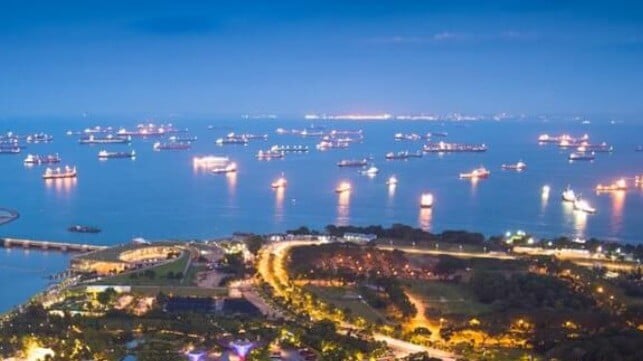The Energy Transition’s Global Shipping Challenge

This piece appears courtesy of the National Center for Energy Analytics and is reproduced here in an abbreviated form. For the full comprehensive study, including data and footnotes, please visit https://energyanalytics.org/shipping/.
The International Energy Agency (IEA) says the world must transition from fossil fuel to renewable power. Their declaration is endorsed by many global institutions, governments, environmentalists, policymakers, and the media. Such a transition means relying primarily on greater use of wind turbines, solar panels, and batteries for electric vehicles. It also means managing grids with increasingly unreliable sources of electricity generation, even as demand rises due to policies seeking to electrify everything else before 2050.
According to the IEA and others, building all that renewable hardware entails a massive fourfold to sixfold increase in the use of critical and rare earth minerals. That unprecedented increase in the volume of these minerals mined and refined will necessarily entail a collateral increase in the need to transport all those gigatons of materials, most of them by sea.
The global maritime industry already faces significant logistical, infrastructure, and manpower challenges to meet today’s needs for moving bulk goods. Advocates of an energy transition have failed to consider the shipping capacity required to transport the staggering rise in maritime ton-miles needed for the transition.
The transition-driven demand for more maritime ton-miles means there will need to be a monumental expansion of the world’s merchant vessel fleet. The data suggest that the world will need to nearly double shipyard capacity to build enough ships to carry the new tonnage by 2035 to support transition goals (and to replace older existing vessels). Today, the U.S. annually builds less than 1% of the world’s new vessel tonnage.
Nearly 80% of all the world’s goods in trade are already carried on ships. Ships are unavoidably critical for an energy transition because most mines supplying the necessary minerals are not in the United States, Europe, or even China for that matter; the majority of the refining of “energy minerals” takes place in China before transport to global buyers. If transition aspirations continue, the location of all the new mining and refining enterprises will determine just how much maritime traffic increases and how many more ships will be needed.
Setting aside which countries will or can build new vessels, shipowners now face additional uncertainty over how their vessels will be powered, given the International Maritime Organization’s mandates to decarbonize their fuel. The approved fuels will impact new ships’ costs and daily operating expenses, thereby inflating cargo costs.
U.S. policymakers need to examine this country’s existing maritime regulations, domestic and allied industrial capacities, and geopolitical exposures arising from the coming demand for minerals. It is also past time to explore the options for rebuilding domestic shipbuilding, infrastructure, and labor force capabilities not only because of commercial imperatives, but also because such capacities were, for example, critical to winning World War II. It is profoundly naïve to believe that shipbuilding capabilities are no longer required for global commerce or this country’s national security.
To read the full text of this article, please visit NCEA at https://energyanalytics.org/shipping/.
The opinions expressed herein are the author's and not necessarily those of The Maritime Executive.
